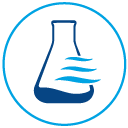
5 Important Hazards to Consider When Maintaining Industrial Hygiene
Job hazards are everywhere, and they will range from minor to major. It is very important that industrial hygienists become effective in recognizing and evaluating on-the-job hazards and recommending controls. Their first step is that they must be familiar with the characteristics of these hazards.
1. Overview about Industrial Hygiene
A major priority for any workplace is to keep its workers and employees safe and healthy. However, especially in higher risk industries this is easier said than done. According to the U.S. Bureau of Labor Statistics (BLS), 5,250 workers died from workplace-related injuries in 2018, and there were 2.8 million nonfatal workplace injuries and illnesses reported in the private sector alone.
The good news is that by improving industrial hygiene services in the workplace these dangers can be reduced. When industries implement robust industrial hygiene and chemical safety programs in their workplaces, hazard levels are reduced, and employees are given the training, tools and protection they need to stay safe when they encounter industrial hygiene hazards.
2. Why Industrial Hygiene Matters?
OSHA defines Industrial Hygiene as the science of controlling hazardous workplace conditions to prevent employees from becoming sick or injured. Based on the workplace deaths and injuries that occur each year in the US, it is vitally important for industrial employers to follow the recommendations to avoid workplace risks. This will involve first making an effort to recognize and evaluate the industrial hygiene hazards in their workplaces and second to adjust for and implement industrial hygiene services to help their employees stay safe.
The reason Industrial hygiene is so essential is because it has been proven to help protect employees from a variety of injuries and illnesses, including:
- Respiratory conditions
- Skin diseases
- Poisoning
- Hearing loss
- Repetitive stress injuries
3. Avoid 5 Industrial Hygiene Hazards
OSHA has identified five major job risks to be aware of and look for at your workplace.
a. AIR CONTAMINANTS
Air contaminants are commonly classified as either particulate or gas and vapor contaminants. When dealing with particulate contaminants the most common are dusts, fumes, mists, aerosols, and fibers. When dealing with gases the most common are gases like acetylene, nitrogen, helium, and argon that are used for welding. Vapors form when liquids or solids evaporate. These vapors are often found where parts-cleaning products, paint, and solvents are used. These contaminants can be dangerous and cause serious harm if they are inhaled by workers.
b. CHEMICAL HAZARDS
There are a lot of harmful chemical compounds. And they can be found in the form of solids, liquids, gases, mists, dusts, fumes, and vapors. The problem for your industrial building is human exposure to these chemicals can result in highly toxic effects whether they are inhaled into the lungs, absorbed through the skin, or ingested. Your workers could be exposed to any of a variety of substances including acids, pesticides, carbon monoxide, flammable liquids, welding fumes, silica dust and fiberglass fibers.
c. BIOLOGICAL HAZARDS
Biological hazards can occur in industrial occupations and locations where there is the possibility of human contact with infectious materials such as blood, fungi, mold, viruses and animal droppings. All of these materials have the possibility of carrying bacteria, viruses, fungi, and other living organisms. As we know these can cause illness and or acute and chronic infections if they enter the body either through orifices or through breaks in the skin.
d. PHYSICAL HAZARDS
Physical hazards are more wide ranging but can be just as injurious to your workers. These hazards include excessive levels of radiation, working in extreme temperatures (hot or cold), extended lengths of sun exposure or constant exposure to loud noise. Physical hazards do not require direct contact to cause serious injury to your workers.
e. ERGONOMIC HAZARDS
Any time your workers are exposed to interactions with the made world that cause them strain or discomfort those activities are classified as ergonomic hazards. These hazards are caused by environments, objects, or systems that result in unnatural, uncomfortable, or awkward movements or poor posture. Ergonomic hazards include activities such as lifting, holding, pushing, walking, and reaching.
4. How Can Torrent Laboratory Help?
Torrent Laboratory has been helping businesses and industries to identify potential industrial hygiene hazards for decades. Our state of the art laboratory equipment, hard earned certifications and expert chemists can provide industrial hazard services to identify any air contaminants, chemical hazards and biological hazards that exist or potentially exist at any facility. We are committed to working closely with our clients to meet their needs, to make the process as straightforward, simple, accurate and timely as possible. Torrent is known to be customer-centric and to have the fastest TATs in the industry.
5. Conclusion
We are committed to working together with occupational health, safety, and environmental professionals who are concerned with protecting their workers, families, and community.
Guided by the principles of Six Sigma, Kaizen, and Lean Thinking, our full-service lab offers the fastest turnaround times in the industry, CA ELAP, Department of Energy (DOE ELAP) and Department of Defense (DoD ELAP) certification, and unparalleled customer service.
Torrent Laboratory provides the region’s most advanced capabilities:
- Fastest TATs in the industry
- Gold standard certifications
- Unrivaled technical and customer support
- Unparalleled on-time performance
- Impeccable quality
- Competitive pricing






